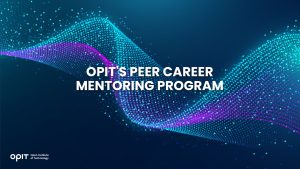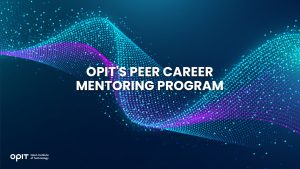

Growth is inevitable in the AI sector. According to Statista, the already-booming industry looks set to go from a value of $100 billion in 2021 to $2 trillion by 2030, increasing by a multiple of 20 to become one of the world’s biggest industries. Naturally, the need for skilled AI professionals will grow alongside that enormous scaling.
That’s where you come in.
With the right applied AI course, you can develop both the knowledge of the foundational theory that sits behind AI and learn how to apply that theory in a real-world setting. Here are four of the best applied AI courses to get you started.
Factors to Consider When Choosing an Applied AI Course
Every search for a new course starts with figuring out the strengths and weaknesses of each one you consider. These factors help you do that, ensuring you don’t spend your hard-earned money on a course that fails to equip you with skills that make you desirable to employers.
Course Content and Curriculum
AI is such an expansive field that every applied AI course has the potential to cover different topics and subjects. Think about what you want to learn (and your prospective career path), then align your course selection with that intended path.
Course Duration
Applied AI courses can vary tremendously in length, from several years for degree-level courses to a few months for online courses. Ask yourself how long you wish to spend studying. Also, consider the flexibility of the course, such as whether you’ll be able to fit your studies around your existing work and family commitments.
Instructor Expertise
AI is a burgeoning industry, meaning expertise levels vary from course to course. For applied AI courses, in particular, you want professors who combine in-depth knowledge of the theory with real-world experience. What have they done in the industry? If the answer is “nothing,” they may not be able to guide you down the path to an AI-centric career.
Course Fees and Financial Aid
Course fees vary massively depending on the type of course you take. For example, those in the U.K. can easily spend between £15,000 and £25,000 on university-level courses, with Aston University’s tuition fees of £23,200 being somewhat typical. Online and self-learning courses cost considerably less, so you need to figure out how much you’re willing to spend (and if you can get any help with your fees) before moving forward.
Job Placement and Career Support
Though you need one eye pointed toward the present when choosing between applied AI courses, the other needs to be firmly pointed toward the future. What prospects will you have when you complete the course? In other words, does the course provide you with a direct path into the industry, along with support, or are you left to fend for yourself once you have your qualification?
Top Choices for Mastering Artificial Intelligence
Choices abound when you jump online to find applied AI courses. The following selection offers a nice mix, from online certifications offered by industry professionals to a couple of courses from some of the world’s most prestigious universities.
Course 1 – IBM Applied AI Professional Certification
If you’re fresh to the world of AI (though ideally not new to computer science), IBM’s industry-specific applied AI courses offer both foundational knowledge and a respected qualification. They’re flexible, too, with this course lasting for six months but only requiring three hours of work per work. Those in full-time work (or education) can fit the course around their lifestyle, while those who have time to burn can complete the entire course much quicker, earning degree credits along the way.
Key Features and Benefits
- Certification from one of the most respected companies in the AI space
- Direct exposure to use cases in the deep learning, machine learning, and neural network spheres
- Learn how to build AI-powered solutions (like chatbots) using Python and IBM’s Watson AI
- Over three-quarters (77%) of students report career improvement
Pricing and Enrollment
IBM’s course is available via Coursera and offers a seven-day trial you can use to get to grips with its structure and examine its modules. It’s fully online, which improves flexibility at the cost of not having direct access to a professor, and you’ll receive an IBM badge upon completion. You’ll pay a monthly fee of $35 (approx. €31) and can enroll at almost any time.
Course 2 – Computer Science for Artificial Intelligence (Harvard University)
Harvard University may be seen as the gold standard in the United States, but what many don’t know is that it offers a comprehensive suite of online courses that almost anybody can take. Its Computer Science for Artificial Intelligence course is a perfect example. Comprising of two courses – an introduction to computer science followed by an introduction to applying computer science principles to AI using Python – it lasts for five months. You get access to professors and can learn at your own pace, with the course recommending between seven and 22 hours of study per week.
Key Features and Benefits
- Two modules give you a crash course in applied AI and the computer science theory that underpins it
- Director access to Harvard professors Doug Lloyd, Brian Yu, and David J. Malan
- Complete flexibility in how and when you learn
- Get to grips with Python and build experience with machine learning libraries
Payment and Enrollment
As an online course, Computer Science for Artificial Intelligence is available for enrollment whenever you’re ready, with the five months starting once you’re enrolled. It costs £277 (approx. €312) and you’ll need to create an account with the EDX website (which hosts the course) to get started.
Course 3 – Artificial Intelligence Graduate Certificate (Stanford University)
Ranked as the third-best university in the United States for general computer science and AI teaching, Stanford University has opened up some of its best courses to online learners. Entirely online (and instructor-led for those who want more guidance) this is one of those applied AI courses that is equivalent to a full graduate degree. You’ll complete at least one required course – with a choice between machine learning and the principles of AI – and select up to three electives. It’s the electives that make this course stand out, as there are 18 to choose from, with the right combination giving you a chance to specialize for specific career paths.
Key Benefits and Features
- Direct tuition from prominent Stanford faculty members, including Andrew Ng and Chelsea Finn
- Some level of autonomy in how you study thanks to the online-centric nature of the course
- Specialize in specific areas of AI thanks to a wide range of electives
- You get a degree from one of the world’s foremost colleges in the AI field
Payment and Enrollment
Let’s get the bad news out of the way immediately – this isn’t a cheap course. As a full-on graduate degree, it costs between $18,200 and $22,400 to take (approx. €16,235 and €19,980), though financial aid may be available for some students. You can’t just hop onto the course, either, as a college-level understanding of calculus, linear algebra, Probability Theory, and several programming languages is required. Stanford itself calls this one of its most difficult courses and recommends that you take several foundation courses (ideally at degree level) before enrolling.
Course 4 – Master in Applied Data Science & AI (OPIT)
As a full postgraduate course that takes between 12 and 18 months to complete, OPIT’s Master in Applied Data Science & AI is an interesting case for one simple reason – there are no computer science prerequisites. The course is open to everybody and it teaches both advanced applied AI concepts and the foundational knowledge needed to understand them. You’ll complete a pair of terms containing courses, with your final term dedicated to a project or thesis that puts what you’ve learned into practice.
Key Benefits and Features
- The course is supplied by an institution with accreditation from the European Qualification Framework
- It’s a fully remote course that gives you control over how and when you learn
- Discounts and payment plans are available, as well as scholarship and funding options
- You come out of the course with a recognized postgraduate degree
Payment and Enrollment
Though the course usually costs €6,500, OPIT offers “early bird” discounts that allow you to enroll for €4,950, assuming you sign up early enough. Intakes are semi-regular, with the next one scheduled for October 2023 and international students get 90 credits under the European Credit Transfer and Accumulation System (ECTS) for successful completion.
Tips for Success in an Applied AI Course
As you can see, you have plenty of options for applied AI courses, from professional certifications designed to get you into a career quickly to full postgraduate degrees. Regardless of your choice, these tips will help you get your precious certification:
- Dedicate time for study – Time well managed is time well spent. Understand that you’ll need to dedicate self-learning time to get to grips with concepts you’re taught during classroom hours.
- Set clear goals – Going into an applied AI course with no sense of what you’re supposed to get out of that course leaves you directionless upon completion. Make sure you know exactly what you stand to gain before committing time (and money) to a course.
- Network often – Even online courses give you a chance to get involved in teamwork projects and speak to experienced industry professionals. Take those chances. The more connections you build during your studies, the more opportunities you’ll see coming out of the back end.
- Seek guidance – As attractive as the prospect of self-guided learning may be, we all need a helping hand from time to time. If a course provides direct access to tutors and professors, use it.
- Stay up to date – AI is a fast-moving field, with every change and advancement bringing new challenges and opportunities. Stay on top of what’s happening in the industry. You may just find that one course sets you up to be ready for those changes, while another may not.
Build Your Skills With an Applied AI Course
Whether you go down the full postgraduate degree route or you choose a professional qualification, an applied AI course is a route into one of the world’s fastest-growing industries. Simply put, we’re set for an AI explosion. Over the next decade, AI will permeate everything we do, from complex computing to simple office tasks, and you can use the right course to give yourself the skills you need to take advantage of that fact. Explore the options shared in this article, ask yourself what you want to achieve in your career, and make the educational choice that’s right for you.
Related posts

Source:
- Raconteur, published on November 06th, 2025
Many firms have conducted successful Artificial Intelligence (AI) pilot projects, but scaling them across departments and workflows remains a challenge. Inference costs, data silos, talent gaps and poor alignment with business strategy are just some of the issues that leave organisations trapped in pilot purgatory. This inability to scale successful experiments means AI’s potential for improving enterprise efficiency, decision-making and innovation isn’t fully realised. So what’s the solution?
Although it’s not a magic bullet, an AI operating model is really the foundation for scaling pilot projects up to enterprise-wide deployments. Essentially it’s a structured framework that defines how the organisation develops, deploys and governs AI. By bringing together infrastructure, data, people, and governance in a flexible and secure way, it ensures that AI delivers value at scale while remaining ethical and compliant.
“A successful AI proof-of-concept is like building a single race car that can go fast,” says Professor Yu Xiong, chair of business analytics at the UK-based Surrey Business School. “An efficient AI technology operations model, however, is the entire system – the processes, tools, and team structures – for continuously manufacturing, maintaining, and safely operating an entire fleet of cars.”
But while the importance of this framework is clear, how should enterprises establish and embed it?
“It begins with a clear strategy that defines objectives, desired outcomes, and measurable success criteria, such as model performance, bias detection, and regulatory compliance metrics,” says Professor Azadeh Haratiannezhadi, co-founder of generative AI company Taktify and professor of generative AI in cybersecurity at OPIT – the Open Institute of Technology.
Platforms, tools and MLOps pipelines that enable models to be deployed, monitored and scaled in a safe and efficient way are also essential in practical terms.
“Tools and infrastructure must also be selected with transparency, cost, and governance in mind,” says Efrain Ruh, continental chief technology officer for Europe at Digitate. “Crucially, organisations need to continuously monitor the evolving AI landscape and adapt their models to new capabilities and market offerings.”
An open approach
The most effective AI operating models are also founded on openness, interoperability and modularity. Open source platforms and tools provide greater control over data, deployment environments and costs, for example. These characteristics can help enterprises to avoid vendor lock-in, successfully align AI to business culture and values, and embed it safely into cross-department workflows.
“Modularity and platformisation…avoids building isolated ‘silos’ for each project,” explains professor Xiong. “Instead, it provides a shared, reusable ‘AI platform’ that integrates toolchains for data preparation, model training, deployment, monitoring, and retraining. This drastically improves efficiency and reduces the cost of redundant work.”
A strong data strategy is equally vital for ensuring high-quality performance and reducing bias. Ideally, the AI operating model should be cloud and LLM agnostic too.
“This allows organisations to coordinate and orchestrate AI agents from various sources, whether that’s internal or 3rd party,” says Babak Hodjat, global chief technology officer of AI at Cognizant. “The interoperability also means businesses can adopt an agile iterative process for AI projects that is guided by measuring efficiency, productivity, and quality gains, while guaranteeing trust and safety are built into all elements of design and implementation.”
A robust AI operating model should feature clear objectives for compliance, security and data privacy, as well as accountability structures. Richard Corbridge, chief information officer of Segro, advises organisations to: “Start small with well-scoped pilots that solve real pain points, then bake in repeatable patterns, data contracts, test harnesses, explainability checks and rollback plans, so learning can be scaled without multiplying risk. If you don’t codify how models are approved, deployed, monitored and retired, you won’t get past pilot purgatory.”
Of course, technology alone can’t drive successful AI adoption at scale: the right skills and culture are also essential for embedding AI across the enterprise.
“Multidisciplinary teams that combine technical expertise in AI, security, and governance with deep business knowledge create a foundation for sustainable adoption,” says Professor Haratiannezhadi. “Ongoing training ensures staff acquire advanced AI skills while understanding associated risks and responsibilities.”
Ultimately, an AI operating model is the playbook that enables an enterprise to use AI responsibly and effectively at scale. By drawing together governance, technological infrastructure, cultural change and open collaboration, it supports the shift from isolated experiments to the kind of sustainable AI capability that can drive competitive advantage.
In other words, it’s the foundation for turning ambition into reality, and finally escaping pilot purgatory for good.

The Open Institute of Technology (OPIT) is the perfect place for those looking to master the core skills and gain the fundamental knowledge they need to enter the exciting and dynamic environment of the tech industry. While OPIT’s various degrees and courses unlock the doors to numerous careers, students may not know exactly which line of work they wish to enter, or how, exactly, to take the next steps.
That’s why, as well as providing exceptional online education in fields like Responsible AI, Computer Science, and Digital Business, OPIT also offers an array of career-related services, like the Peer Career Mentoring Program. Designed to provide the expert advice and support students need, this program helps students and alumni gain inspiration and insight to map out their future careers.
Introducing the OPIT Peer Career Mentoring Program
As the name implies, OPIT’s Peer Career Mentoring Program is about connecting students and alumni with experienced peers to provide insights, guidance, and mentorship and support their next steps on both a personal and professional level.
It provides a highly supportive and empowering space in which current and former learners can receive career-related advice and guidance, harnessing the rich and varied experiences of the OPIT community to accelerate growth and development.
Meet the Mentors
Plenty of experienced, expert mentors have already signed up to play their part in the Peer Career Mentoring Program at OPIT. They include managers, analysts, researchers, and more, all ready and eager to share the benefits of their experience and their unique perspectives on the tech industry, careers in tech, and the educational experience at OPIT.
Examples include:
- Marco Lorenzi: Having graduated from the MSc in Applied Data Science and AI program at OPIT, Marco has since progressed to a role as a Prompt Engineer at RWS Group and is passionate about supporting younger learners as they take their first steps into the workforce or seek career evolution.
- Antonio Amendolagine: Antonio graduated from the OPIT MSc in Applied Data Science and AI and currently works as a Product Marketing and CRM Manager with MER MEC SpA, focusing on international B2B businesses. Like other mentors in the program, he enjoys helping students feel more confident about achieving their future aims.
- Asya Mantovani: Asya took the MSc in Responsible AI program at OPIT before taking the next steps in her career as a Software Engineer with Accenture, one of the largest IT companies in the world, and a trusted partner of the institute. With a firm belief in knowledge-sharing and mutual support, she’s eager to help students progress and succeed.
The Value of the Peer Mentoring Program
The OPIT Peer Career Mentoring Program is an invaluable source of support, inspiration, motivation, and guidance for the many students and graduates of OPIT who feel the need for a helping hand or guiding light to help them find the way or make the right decisions moving forward. It’s a program built around the sharing of wisdom, skills, and insights, designed to empower all who take part.
Every student is different. Some have very clear, fixed, and firm objectives in mind for their futures. Others may have a slightly more vague outline of where they want to go and what they want to do. Others live more in the moment, focusing purely on the here and now, but not thinking too far ahead. All of these different types of people may need guidance and support from time to time, and peer mentoring provides that.
This program is also just one of many ways in which OPIT bridges the gaps between learners around the world, creating a whole community of students and educators, linked together by their shared passions for technology and development. So, even though you may study remotely at OPIT, you never need to feel alone or isolated from your peers.
Additional Career Services Offered by OPIT
The Peer Career Mentoring Program is just one part of the larger array of career services that students enjoy at the Open Institute of Technology.
- Career Coaching and Support: Students can schedule one-to-one sessions with the institute’s experts to receive insightful feedback, flexibly customized to their exact needs and situation. They can request resume audits, hone their interview skills, and develop action plans for the future, all with the help of experienced, expert coaches.
- Resource Hub: Maybe you need help differentiating between various career paths, or seeing where your degree might take you. Or you need a bit of assistance in handling the challenges of the job-hunting process. Either way, the OPIT Resource Hub contains the in-depth guides you need to get ahead and gain practical skills to confidently move forward.
- Career Events: Regularly, OPIT hosts online career event sessions with industry experts and leaders as guest speakers about the topics that most interest today’s tech students and graduates. You can join workshops to sharpen your skills and become a better prospect in the job market, or just listen to the lessons and insights of the pros.
- Internship Opportunities: There are few better ways to begin your professional journey than an internship at a top-tier company. OPIT unlocks the doors to numerous internship roles with trusted institute partners, as well as additional professional and project opportunities where you can get hands-on work experience at a high level.
In addition to the above, OPIT also teams up with an array of leading organizations around the world, including some of the biggest names, including AWS, Accenture, and Hype. Through this network of trust, OPIT facilitates students’ steps into the world of work.
Start Your Study Journey Today
As well as the Peer Career Mentoring Program, OPIT provides numerous other exciting advantages for those who enroll, including progressive assessments, round-the-clock support, affordable rates, and a team of international professors from top universities with real-world experience in technology. In short, it’s the perfect place to push forward and get the knowledge you need to succeed.
So, if you’re eager to become a tech leader of tomorrow, learn more about OPIT today.
Have questions?
Visit our FAQ page or get in touch with us!
Write us at +39 335 576 0263
Get in touch at hello@opit.com
Talk to one of our Study Advisors
We are international
We can speak in:


